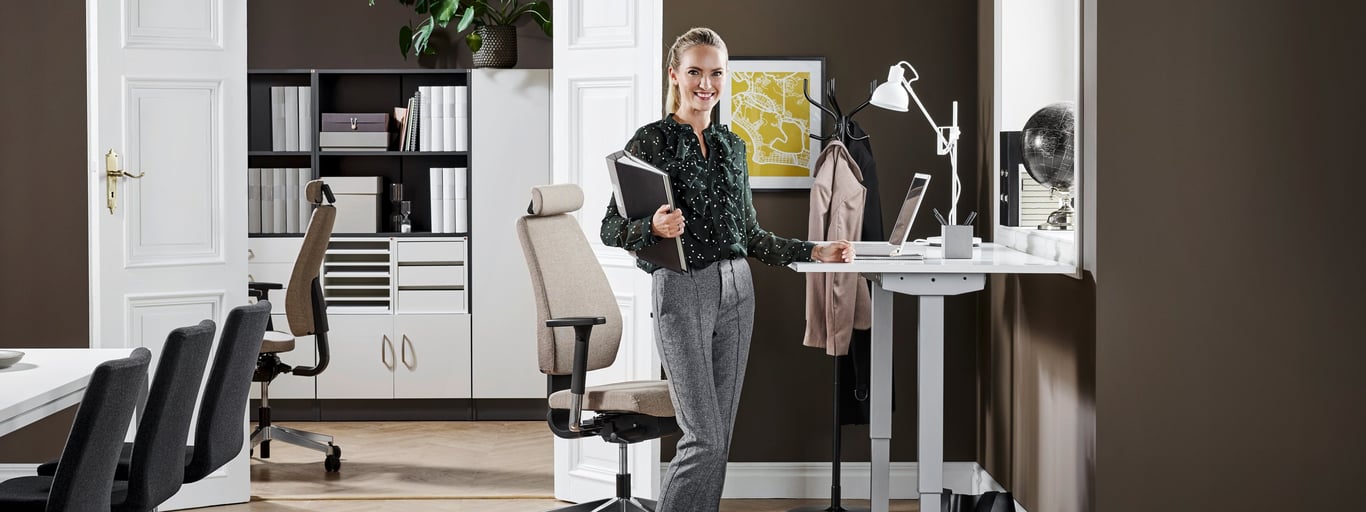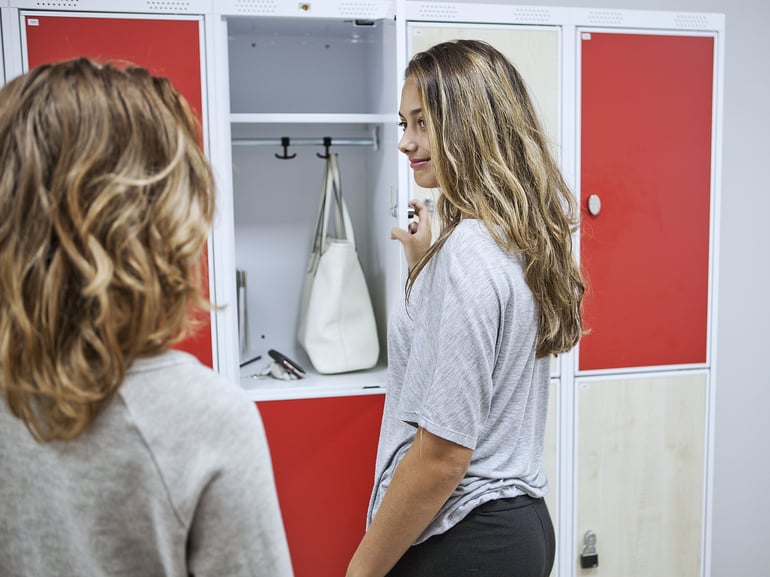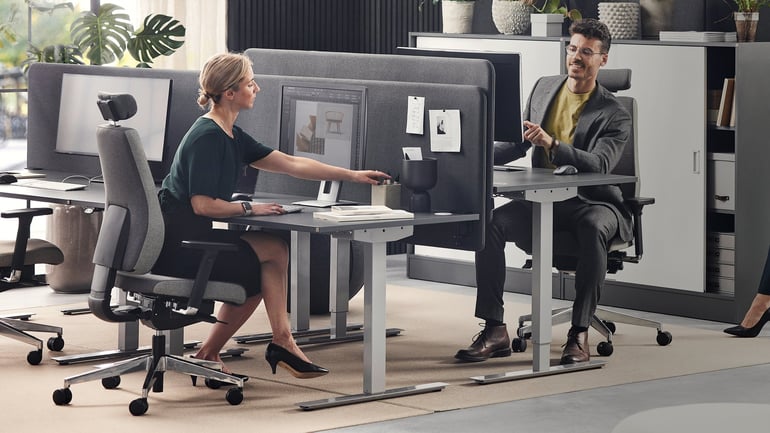3 easy exercises to keep you active at your desk

Do you use a sit-stand desk at work to prevent prolonged periods of sitting? Congratulations! When you stand up to work, you exercise your muscles, improve your posture and increase your blood circulation, which is good for both body and mind. These three simple exercises make it even easier to keep your body moving while you work – great if you want to make the most of your standing desk!
Exercise 1: Stand on one leg
While standing up at your height-adjustable desk, test your balance by standing on one leg for short periods of time. Lift each leg and let your foot rest on the back of the other knee. By doing this, you are exercising your thigh muscles, which increases your blood circulation and the flow of oxygen to the brain. It also requires your core muscles to work to keep your balance. Make it a habit to always stand on one leg when you do certain tasks, such as answering emails or talking on the phone. Hold the position as long as it feels comfortable and then change to the other leg.
Exercise 2: Stand on your tiptoes
Another way to activate the thigh muscles and get your blood circulation going is to stand on your tiptoes. Start by supporting yourself on the desk. Then do 10 to 20 toe stands while continuing to work normally. Stand on your toes for about five seconds and then lower yourself back down on your heels slowly and carefully, take a short rest and start all over again.
Exercise 3: Swing your legs
Are your hips stiff from sitting still for too long? Moving your legs back and forth like a pendulum is a good way to activate stiff hips. Swing your leg forwards or to the side 10 to 20 times and then change to the other leg. As well as counteracting the stiffness, this activity will also boost your body’s energy levels.
How to stand correctly at your sit-stand desk
Standing has a lot of benefits but you must make sure you stand in a way that reduces the amount of strain on the body.
1. Stand up straight with your weight equally distributed on both legs. Imagine that someone is pulling you by a thread up towards the ceiling. Add an anti-fatigue mat to help take pressure off the lower limbs.
2. Your arms should rest on the desktop with your elbows bent at a 90° angle and your shoulders should be relaxed.
3. Make sure your keyboard and mouse are close to your body and that your screen is at eye level. This will minimise strain on your neck, shoulders and arms.

